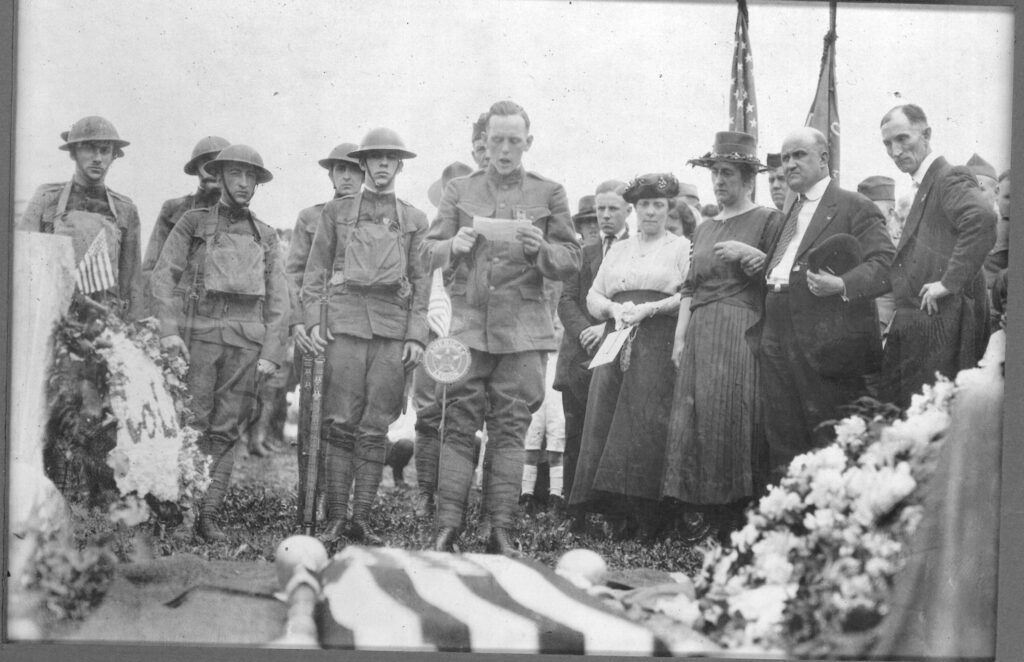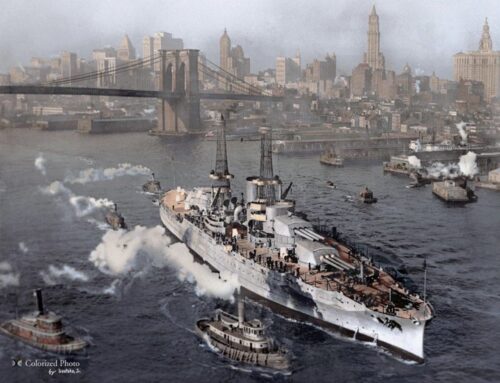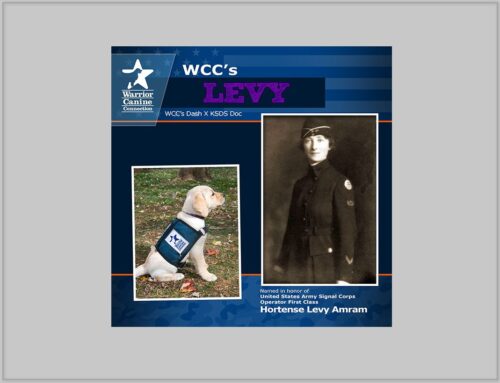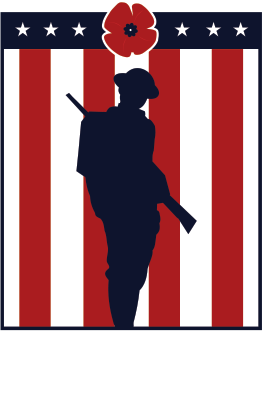Someone had to do it: Book about Forgotten Letters from WWI “Reveals Timeless Lessons of Honor and Courage”
Published: 19 June 2025
By John Chase, MD
Special to the Doughboy Foundation website
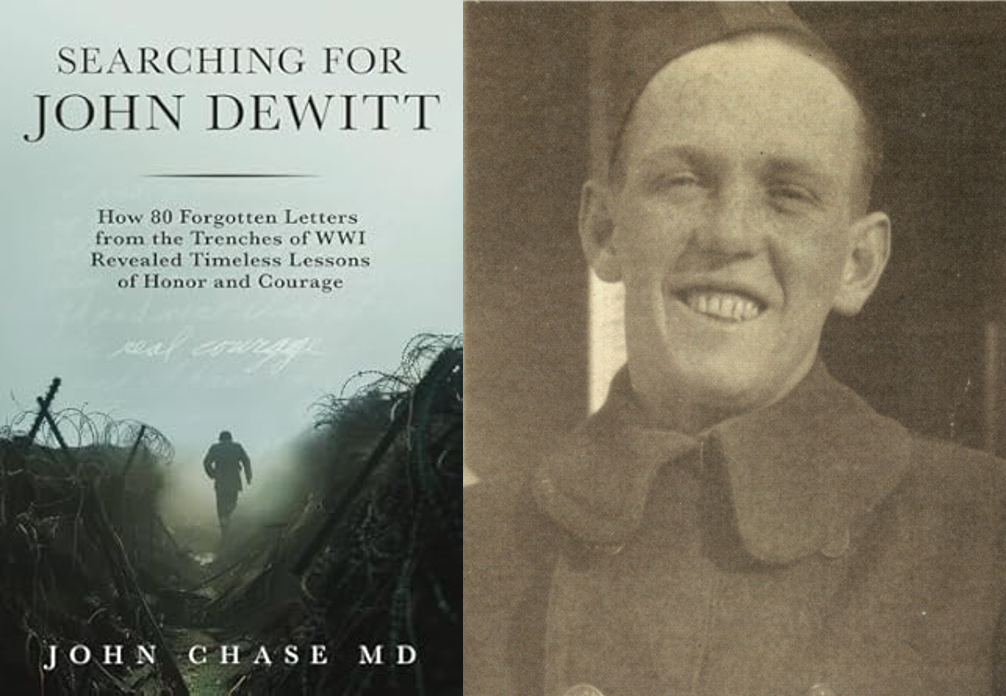
Book cover and John DeWitt
“Somebody could write a book about these.” Abby Clutter, May 2020
“Maybe I will…” John Chase, June 2020
My sister Abby was helping my 80 year old Uncle Jack DeWitt move out of his house in Oklahoma City, OK to an assisted living facility. They were going through the contents of the garage and she found a number of shoeboxes containing some old letters.
“What are these Jack?”
“Oh, just some old letters my Dad wrote to his parents in Council Bluffs when he was in WWI.”
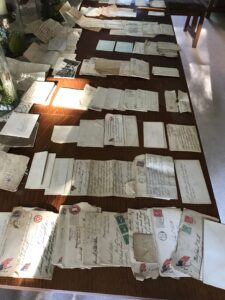
John DeWitt’s World War I letters laid out on author John Chase’s dining room table in Chronological order
She started skimming them and noticed two things:
1. They were legible in a beautiful cursive penmanship
2. The letters were in unbelievably good condition, especially for sitting unprotected in shoeboxes in a garage in Oklahoma City summers and winters.
Looking at them further she found they were in disarray but seemed to be from late 1917 to 1918. She also found he had been gassed by German chemical weapons and wounded in the leg and received a Purple Heart.
She asked Jack “What did he do in the War?”
“Oh, he was a runner in the trenches.”
As Jack was a retired FBI agent, perhaps this didn’t impress him. But it did us!
Somebody could…
So she and I found there were about 75-80 letters and we put them in chronological order.
As I was an experienced author (I had written one, yes one, self-published book) and fully retired, I took it upon myself to try and do something with the letters and save them for posterity. Our family’s and perhaps even for history.
Then, as we were looking through Jack DeWitt’s files from his years in the FBI, we found a typewritten copy, on legal paper, of an article from the Stars and Stripes, the Battalion newspaper. In it was described what it was like to be an Army runner in the trenches in WWI. (It is now letter #61.)
On the last page there was a note, typed (by Grandpa’s legal secretary) that was dated October 17, 1972:
To: Jack DeWitt, John Chase and any other interested persons
You have asked me about my war experiences. I told you I was a Battalion runner, but I don’t think it meant a great deal to you.
I recalled that there was an article in the Stars and Stripes about runners. The other day Joel Boone brought in a book containing articles of the Stars and Stripes. I looked and found the above account.
The Al Boysen and Billy Shupp were members of my own Company L. They were company runners. I was located at battalion headquarters. Each company had two runners there.
It was after the above described battle that I was recommended for a DFC. (note: but it should have been DSC – Distinguished Service Cross – seen in his other letters.)
I was given a Division citation rather than the DSC.
I thought you would be interested in reading the same.
I had never seen this note until that day in Abby’s living room in May 2020.
 This sent a chill through me! I felt like he was talking to me from the grave. Talking to me through all those years. And I felt I should do something with it. After all, it was addressed to me.
This sent a chill through me! I felt like he was talking to me from the grave. Talking to me through all those years. And I felt I should do something with it. After all, it was addressed to me.
Hence this book!
Sounds easy, but it’s not. I enlisted help with the research and making a story out of it and it took 1 ½ years to get it written. Then it took 6 months to find a publisher. And unless your last name is Grisham or Rowling it is unlikely you will bring in more money than you will spend getting it written, published and marketed. But it’s done and I am glad I did it.
Not having any more than a passing interest in WWI before these letters popped into my life, I learned a great deal in the writing process. I didn’t focus on the political or military strategies, but tried to convey what it was like for the individual soldier in the trenches in WWI.
Even though I knew John DeWitt when I was growing up (he died when I was a sophomore in college) I learned much about him from the letters and I think he wasn’t much different from any other 18-21 year old American who volunteered for the service in “The Great War”. He was brave and not afraid, but also realistic in that he knew he could die anytime. The contrast between him and the youth of today is stark.
He was devoted to his family and always concerned about how they were doing at home. He was humble yet confident. He was very proud of his service.
He wasn’t allowed to include much detail in his letters as all the letters were censored, but he still didn’t complain. Our research showed he had miserable conditions to deal with in the trenches, but he went out of his way to reassure his family.
Earlier this year I was invited to join a college friend on a previously planned trip to France and Belgium to visit WWI and WWII sites. We just finished that trip in early May. This trip was quite insightful-there in nothing quite like being there.
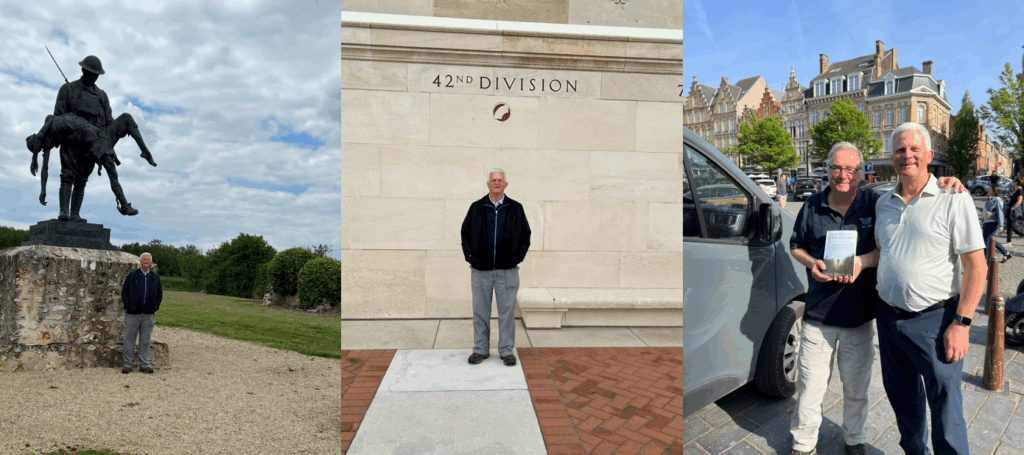
Author John Chase visiting WWI battlefields in Europe in 2025: (left) in front of the Field monument to the Rainbow Soldier by sculptor James Butler 42nd Division (Rainbow Division) at location of the battle of Croix Rouge Farm; (center) at the Chateau-Thierry American monument; (right) with guide Jacque Ryckebosch in Ypres, Belgium. Jacque is holding a copy of John’s book.
There were 18 million deaths associated with WWI, 8 million of them civilians. It is hard to understand why, except for egos and alliances.
The industrialization of the war machines led to astronomical number of deaths and many of the bodies were vaporized and never recoverable
I came away with 3 big takeaways.
- There is a surprising number of people out there that are still very interested in WWI, despite the fact I was told by publishers that WWI books don’t sell because people aren’t interested in it.
- There is a smaller number of people (guides, museums, Memorial caretakers, WWI historical association members) who are very dedicated to keeping the memory alive and thanking all the soldiers who gave their lives to keep Europe from being overrun by Germany.
- There is magnificent work being done all over the world by the American Battle Monuments Commission (ABMC) keeping the cemeteries and memorials in flawless shape so that their families and all Americans can be proud and thankful for the sacrifice of our soldiers.
I think people today should care and learn about WWI for two main reasons:
- To try and avoid the mistakes that got so many people killed in 1914-1918. “Those who ignore history are destined to repeat it.”
- To learn about the aspects of character (bravery, humility, thoughtfulness, respect …) that our soldiers who enlisted had so we can emulate them to the benefit of our present and future generations.
Dr. John Chase is a retired physician and author.
External Web Site Notice: This page contains information directly presented from an external source. The terms and conditions of this page may not be the same as those of this website. Click here to read the full disclaimer notice for external web sites. Thank you.
